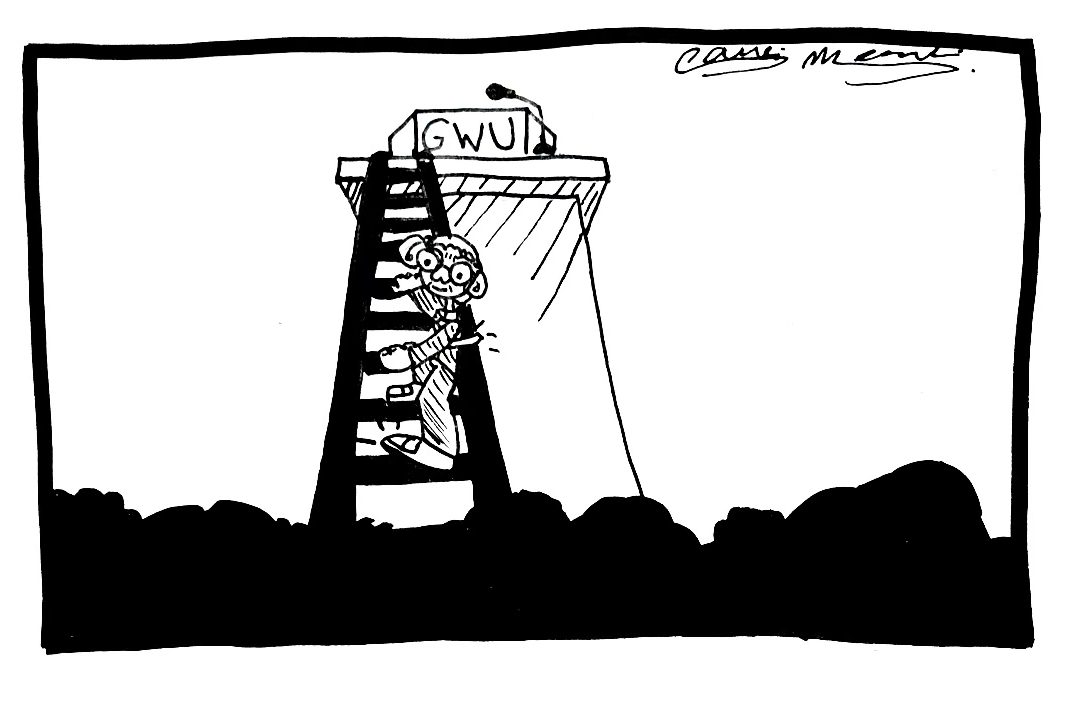Evan Wolf is a rising freshman majoring in political communication.
The COVID-19 pandemic brought about an unprecedented disruption to both K-12 and higher educaiton at a national and worldwide scale. Classrooms across the country and the globe were forced to adjust to a new virtual educational landscape.
Students are no strangers to this considering all of the past academic year was conducted fully online. This topic will continue to be relevant to GW, in light of officials’ recent decision not to provide opportunities for remote or virtual classes in the 2021-22 school year.
This decision puts those who benefit from technology in learning at a disadvantage. It takes away the chance to foster a more diverse and comfortable learning environment for a wide array of students.
Officials should consider virtual learning as a viable option for students – pandemic or otherwise – to ensure that all students have an equal opportunity in their education. Expanding access to online learning options creates flexibility for students by putting them in charge of how they learn. This could mark the beginning of a shift away from a one-size-fits-all classroom and toward a more equitable learning environment.
In order to better understand virtual learning, it’s worth examining its effectiveness even before the pandemic. Many studies have explored the effects of blended or flipped classrooms, which are hybrid learning environments that include both virtual and in-person lessons. One study published by faculty at the National Taiwan Normal University in July of 2016 found that high school students in flipped classrooms performed better academically compared to those in traditional classrooms. This suggests that a blended learning model could be beneficial for some struggling students.
The study revealed that the ability to watch recorded video lessons online was helpful for some students because it allowed them to watch at their convenience and process the material at their own pace. Those small adjustments helped students take control over their learning process and to be proactive in working to better understand the material.
A more comprehensive study from the Journal of Educational Technology and Society affirmed these findings, concluding that flipped classrooms as a whole can help students improve academically. It is clear that including virtual learning options in the lesson plan can lift students up and boost their learning abilities.
This is why it is important for administrators to offer virtual learning options. Those who prefer to use technology in learning can do so and reap the benefits while those that prefer a more traditional classroom can remain in a more comfortable setting. Schools must strive to offer learning environments that are as diverse as the tastes, preferences and needs of each individual student.
Virtual classes quickly went from the exception to the norm during the pandemic. In the process, it laid bare a crucial roadblock toward virtual or blended options in education: unequal access to technology and the internet.
In a report from December on what he dubbed the “Digital Divide in Virtual Learning,” Director of the UCLA Center for Neighborhood Knowledge Paul Ong found that households with parents that do not have a college degree are less likely to have access to computers and the internet, as are lower-income households. In addition, Black and Latino students have had more limited access compared to white and Asian American students.
Our education system must curb these inequalities by providing the means to use crucial learning tools in different types of learning environments.
Although there are many benefits to virtual learning, the isolation that virtual learning brought many students during the COVID-19 crisis was often damaging.
The Intercultural Development Research Association released a newsletter in March on how the pandemic affected grade school and college students’ mental health. It cited findings from a survey of San Antonio students which found that “more than 71% of survey respondents consider virtual remote learning as contributing more stress than traditional in-person school.”
This is representative of a larger trend throughout the pandemic. According to a survey from the Centers for Disease Control and Prevention, about 75 percent of people ages 18 to 24 have had at least one negative mental health symptom during the pandemic.
This truth likely resonates with many of us, either because of a personal experience or because people we know struggled with virtual learning or mental health during the pandemic.
The stress many students felt as a result of remote learning is an important reminder that while virtual learning is beneficial for some, being in a traditional classroom setting is preferable for some others. Choice in education cuts both ways. Having more room for students to choose their learning environment and providing the tools to maximize that learning is crucial in order to achieve a more equitable education system.
GW’s administration can learn from the past and adapt to the future by offering virtual learning options and providing opportunities for a more blended classroom environment. The continuation of virtual options could help students who view technology as a resource to aid their learning and expand their potential.
By recognizing the challenges of the COVID-19 crisis and turning them into opportunities, administrators and professors at GW can create a more equitable classroom environment that suits the needs of each student.



